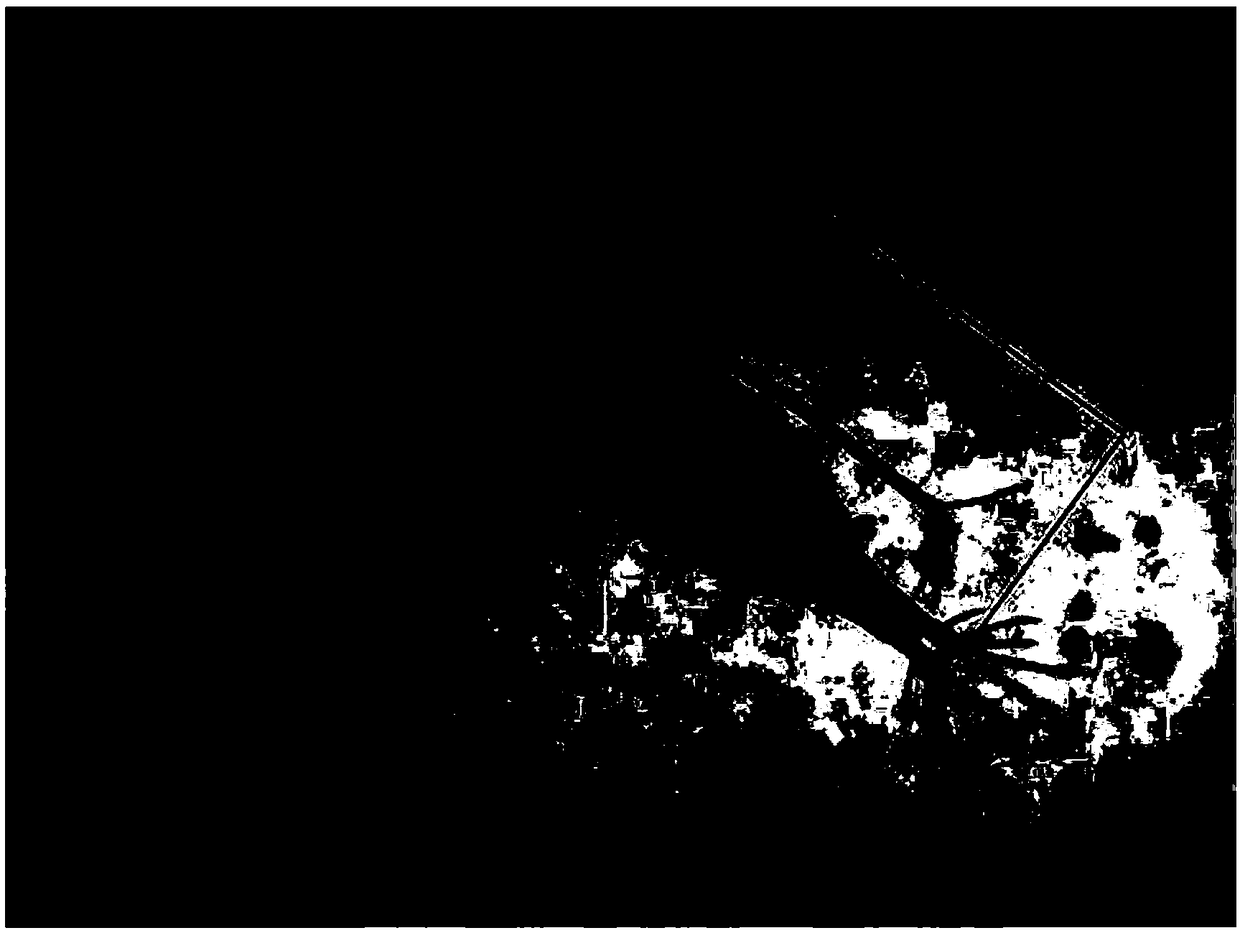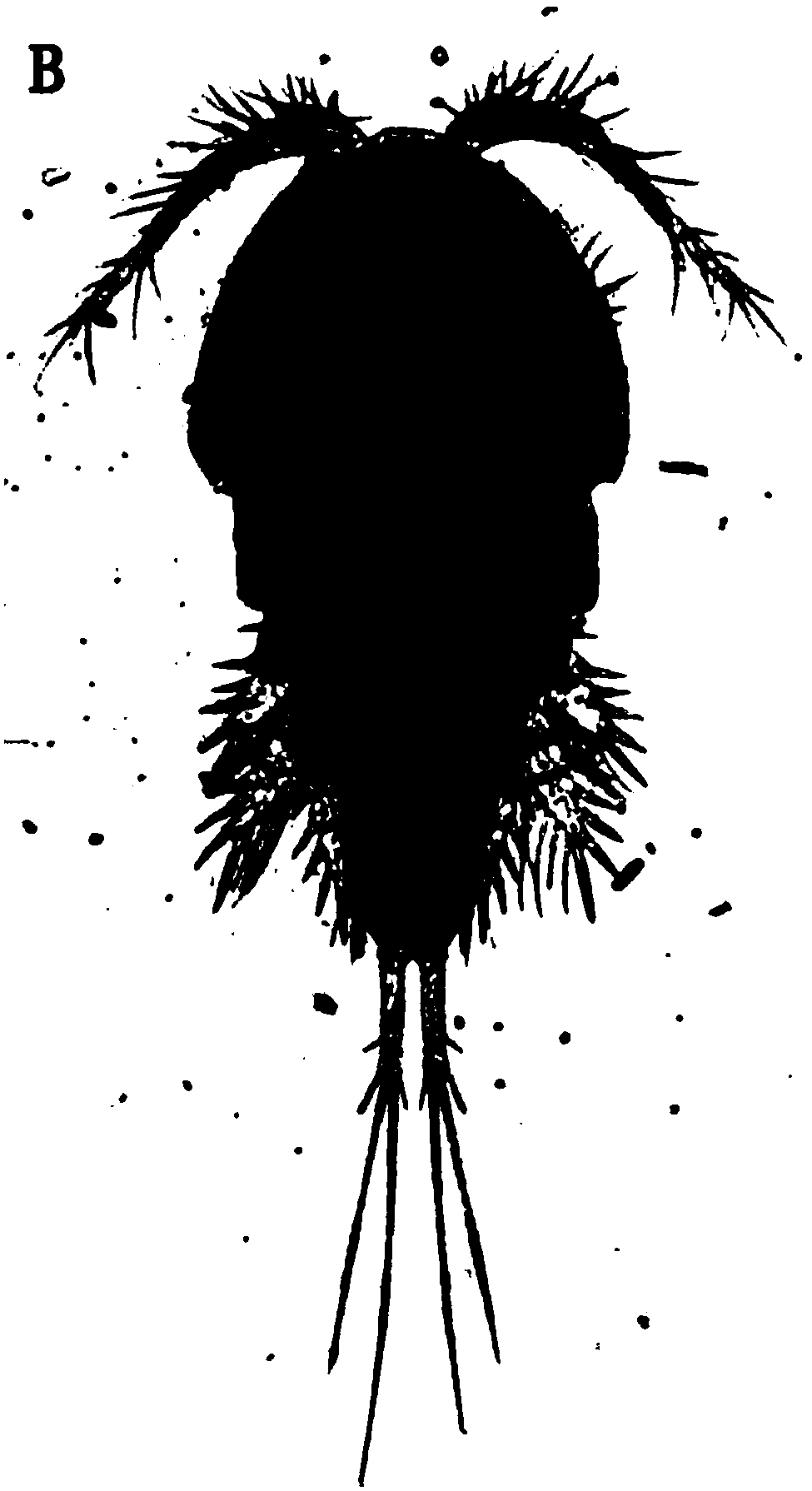Body restoration and pretreatment method before identification of zooplankton samples
A zooplankton and pretreatment technology, applied in the preparation of test samples, etc., can solve the problems that cannot be popularized and used, and the difference is far away, and achieve the effect of facilitating the recovery of the body
- Summary
- Abstract
- Description
- Claims
- Application Information
AI Technical Summary
Problems solved by technology
Method used
Image
Examples
Embodiment 1
[0034] Embodiment 1 zooplankton sample pretreatment method
[0035] 1. Fixed body recovery solution, including three parts:
[0036] (1) The collected zooplankton copepods (the collection location is the Wuzhou section of Xijiang River, using 13# zooplankton net to collect more) samples, the fixative adopts the formaldehyde that adds 5% of the sample volume, affixes a label, and puts it in a cool place Preserve between dry samples; after one year of preservation, filter the zooplankton copepod samples with a 13# net or a sieve of equal aperture to separate the zooplankton from the fixative solution (formaldehyde solution);
[0037] (2) Add Tris-HCl buffer solution to the filtered fixing solution, adjust the pH to about 7.0 (mainly to neutralize the pH drop caused by the oxidation of formaldehyde to formic acid), and obtain the body recovery solution;
[0038] (3) Add the zooplankton separated in step (1) to the body recovery solution whose pH has been adjusted in step (2), to...
Embodiment 2
[0047] Embodiment 2 Different temperature comparative experiments
[0048] (1) The pretreatment method of zooplankton samples is the same as in Example 1, except that the temperature of the water bath set in step 1(5) is different, which are 30°C, 40°C, 50°C, 70°C, and 80°C. gradient.
[0049] (2) The result is as follows image 3 As shown: the temperature is 50°C, the effect is the best; the temperature is 30°C, there is no change compared with the sample itself; the temperature is 80°C, the sample expands excessively, and cannot be used as an identification.
Embodiment 3
[0050] Embodiment 3 Different rotating speed comparative experiments
[0051] (1) The zooplankton sample pretreatment method is the same as in Example 1, the difference is that in step 3, when the shaker is used to accelerate the movement of water molecules, the comparison of the effects of accelerating the recovery of the body under different rotational speeds is set, and a control is set respectively (without a shaker) , 20r / min, 50r / min, 100r / min, 200r / min and 500r / min six groups of experiments.
[0052] (2) The result is as follows Figure 4 As shown: the control group has a certain effect, but not obvious; the 50r / min and 100r / min treatment groups have better effects, and the body stretches; the 500r / min body has a certain dehydration effect.
PUM
 Login to View More
Login to View More Abstract
Description
Claims
Application Information
 Login to View More
Login to View More - R&D
- Intellectual Property
- Life Sciences
- Materials
- Tech Scout
- Unparalleled Data Quality
- Higher Quality Content
- 60% Fewer Hallucinations
Browse by: Latest US Patents, China's latest patents, Technical Efficacy Thesaurus, Application Domain, Technology Topic, Popular Technical Reports.
© 2025 PatSnap. All rights reserved.Legal|Privacy policy|Modern Slavery Act Transparency Statement|Sitemap|About US| Contact US: help@patsnap.com



